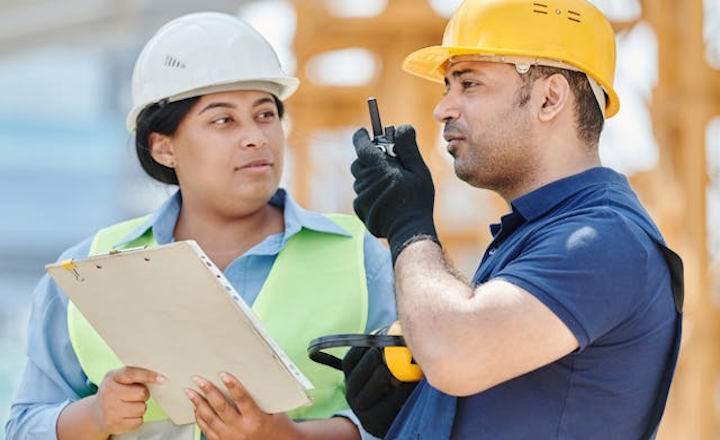
Whether you’re working on a small construction project or you've been hired to build a large mall, safety is always a top priority. And while those bigger projects require more drastic measures, most safety rules apply to smaller construction projects or sites. If you want to save time, frustration, and your people, here is the essential safety checklist you should follow.
Gear That Actually Works
Hard hats aren’t ornaments. Boots don’t exist to match the uniform. Gloves aren’t just for show. They have to do the job. A scratched visor, a cracked helmet, or mud-filled soles can turn a simple task into something dangerous. On small sites, every person moves around quickly and carries awkward loads. One slip from a loose strap or frayed lace can ruin a morning, or worse.
This makes it vital to ensure the gear and PPE fit, function, and are checked regularly. Comfort isn’t a luxury. Comfort keeps hands steady, knees safe, and backs from screaming by midday.
Checking the Ground Regularly and Thoroughly
When you’re working on a construction project, it should be very important to you that the ground makes sense. Uneven dirt or hidden puddles aren’t just minor nuisances. They’re accidents waiting to happen. Uneven dirt and hidden dips may need a quick fix with Cranepads cribbing blocks to keep machinery or planks steady before anyone starts moving around.
The details are easy to miss. A loose sheet of metal leaning against a fence might shift under the wind and clip a leg. A low branch draped over scaffolding could catch a hard hat. These are the things that rarely make the papers, but they stop work just as effectively. Anticipating them early is half the battle.
Tools That Don’t Betray You
Even basic tools need respect. You can neglect a wobbly saw and expect it not to betray you. The same is true for a drill that sparks or a worn ladder. That’s why all your tools should be checked fast but properly, bolts tightened, blades sharpened, and cords untangled.
It’s imperative to encourage workers to follow these steps and send any malfunctioning equipment for repair or replacement immediately. Nothing should be used if it’s unsafe.
Being Ready When Things Go Wrong
Accidents happen, no matter how careful you are. First aid kits should be stocked beyond bandages. Even a minor chemical spill can make a whole path unsafe in seconds. So, everyone should know where the kit is, who to call, and what the fastest route out of the site looks like.
Practising a response isn’t overkill. A small drill, a quick walk-through, or even just pointing out escape routes can make a difference when the unexpected comes. Panic spreads faster than a misfired nail, and preparation keeps it contained.
Respecting Electricity
Cables are often strewn across gravel, sockets can be overloaded, and generators are tucked in corners. Electricity doesn’t care about the size of the project. It’s invisible until it bites. All connections should be inspected and rerouted if necessary. Even small shocks can knock someone into danger or disrupt machinery.
Ground fault devices, dry workspaces, and unplugging idle machines are simple rules. They aren’t dramatic, but they keep the site moving without the jolt that shuts everything down. Treating power with care is as much common sense as it is policy.
Communication That Actually Works
Small sites move fast, but that’s not an excuse to turn a blind eye to the rules. If you use clear signals, quick calls, or even a casual check-in, you can prevent accidents. Supervision leads to presence. Spotting a plank out of place, a cord underfoot, or someone lifting wrong takes attention, not authority.
Everyone being aware of everyone else keeps the pace up without letting mistakes fester. It also keeps tempers calmer. A quiet correction beats a shouted warning any day.
Keeping Records, Learning Fast
What use is a checklist if people don’t pay attention to it? Daily logs, incident notes, and inspection reports are not just paperwork. They are tools that help spot trouble before it escalates, and you should use them as such.
Going over the checklist regularly keeps everyone alert. Safety is not something you set and forget. Noticing patterns, fixing minor mistakes on the spot, and thinking ahead for potential hazards keep the site moving smoothly.
Conclusion
A safe small construction site doesn’t come from big gestures or heavy paperwork. It’s the result of attention, care, and constant awareness. Add those to your routine, and you and your workers will feel safer and more confident on the field.




